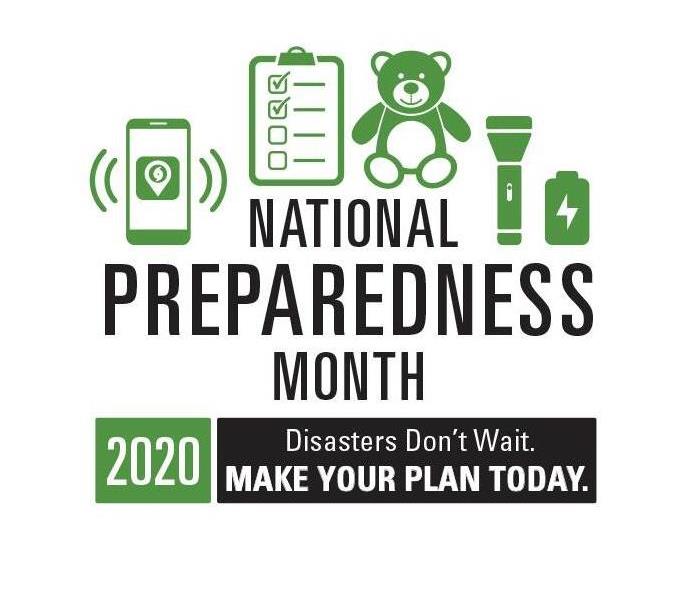September: National Preparedness Month - Week #2
9/6/2020 (Permalink)
September: National Preparedness Month
Week #2 – September 6th-12th
Goal: Build A Kit
It is now time to set yourself up for success if you are not able to obtain supplies for a few days during a disaster! Last week we looked at supplies you will need for each specific member of your family. This week, we want to add to that list, and build a kit that can help you be independent for at least 3 days.
Before you begin, start with how you will store these items. Putting them in airtight bags, then placing those bags in easy to move containers/duffel bags is the way to go. This way, no matter what happens, your supplies are safe and easy to move.
Basic Kit Items:
- Water
- Food
- Battery operated radio or weather radio (with extra batteries)
- Flashlights (with extra batteries)
- First aid kit
- Whistle
- Dust masks
- Plastic sheeting & duct tape
- Wipes, trash bags and plastic ties
- Wrench & pliers
- Manual can opener
- Local map
- Cell phone chargers & backup battery
Additional items to consider:
- Cloth face coverings
- Soap/hand sanitizer/wipes
- Prescription & over the counter medication
- Contact lens solution
- Infant formula, bottles, diapers, wipes & diaper rash cream
- Pet food & water
- Cash
- Copies of important family document such as: ID cards, bank account records, and insurance policies. These should be stored in a waterproof container or electronically.
- Sleeping bag or blankets for each person
- Complete change of clothing for each person
- Fire extinguisher
- Matches (in waterproof container)
- Personal hygiene items
- Paper products
- Activities for any children
Maintaining Your Home Kit:
Now that your kit is stocked and ready, you cannot simply forget about it. You now need to make sure your kit is kept in a cool, dry place, food items are stored in tightly closed plastic or metal containers, expired items are replaced frequently, and your families changing needs are always reflected in your kit.
Kit Storage Locations:
Your Home Kit should be located near an exit, and be easy to grab and go. Make sure everyone in the home knows where it is kept.
Your Work Kit should be packed to prepare you to shelter in place for at least 24 hours. It is also important to have a comfortable pair of walking shoes in this kit, as you may not be wearing comfortable shoes at work when an emergency takes place.
Your Car Kit should always be in your car and stocked up. This includes jumper cables, flares or reflective triangles, ice scraper, cell phone charger, blanket, map and cat litter or sand (to help you gain traction if stuck).
Join us next week on the blog for more information on how to prepare your family for a disaster!





 24/7 Emergency Service
24/7 Emergency Service
